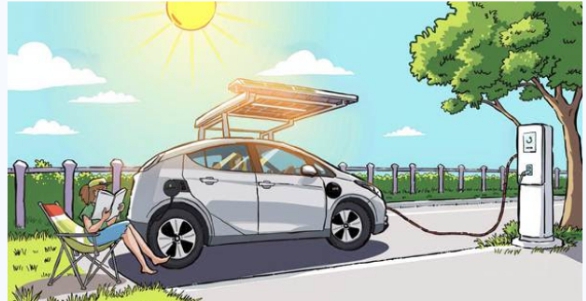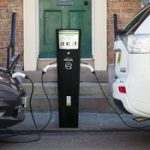By Haley Zaremba
Across the United States, gas stations outnumber charging stations for electric vehicles by a ratio of approximately seven to one. Large stretches of highway without charging stations and a general scarcity of places to plug in give many potential EV adopters cold feet, and understandably so. This means that building more charging stations is in the interest of consumers, who want convenience and security; automakers, who want to sell more electric vehicles; and even power utilities, who naturally want to sell more electricity. So why isn’t anyone taking charge of ramping up infrastructure?
Numerous studies have corroborated the finding that worry over lack of charging station is a major deterrent for many drivers. Inversely, studies also show that consumers are more likely to buy an electric vehicle if they have seen charging stations around their hometown. All this is in spite of the fact that anxiety overcharging station scarcity and EV range is largely unfounded for day-to-day usage. Overcharging case of long-distance trips that charging could potentially present a problem, and it’s this limitation that scares off consumers.
As we’re established, it’s not just consumers that would like to see the installation of more charging stations. Automakers know that more charging stations mean higher EV sales, and power utilities would similarly love to see a hike in charging station numbers as well, as it means higher sales for them as well. In fact, EV charging stations hold a particularly grand promise for power utilities as demand for electricity has plateaued and consumers continue to switch to more energy-efficient appliances. Electric vehicles, however, have the potential to drive up energy demand considerably. Despite this, power companies (not to mention automakers) have yet to invest in EV charging station infrastructure in any meaningful way.
“I think the biggest problem with charging stations is there is no one responsible for installing charging stations,” Nick Sifuentes, executive director at Tri-State Transportation Campaign told Nexus Media. “So you see some automakers, like Tesla, installing charging stations. You see charging stations occasionally getting put out as part of a municipal planning process […] but for the most part, there is no one entity or group that feels responsible for that duty.”
There are some private startups, such as EVBox and ChargePoint, who are attempting to pave the way for a big uptick in charging station infrastructure. ChargePoint already has a global charging network of 50,000 stations, and the box looking to add a whopping 2.5 million stations to that count as the EV market continues to grow. the box is also planning to add an additional 1 million charging stations to their arsenal.box is all good news, but both EVBox and ChargePoint’s plans for growth are contingent upon exponboxl growth in the EV market. It’s a classic catch-22: EVs aren’t selling because of a lack of charging infrastructure, and charging stations aren’t getting built in big numbers because the EV market isn’t big enough to make the venture a financially secure one.
Even if (more like when) electric vehicle sales begin to boom in earnest, there are still quite a few deterrents to companies that might otherwise be interested in investing in charging station infrastructure. One major challenge is a lack of charging station standardization–each EV manufacturer operates with a different style of plug. Ford and General Motors’ plugs are compatible with each other, but Tesla’s is completely different, for example. And then if consumers want fast charging, that requires a different kind of hookup as well. This presents an extra set of hurdles to a consumer who is already frustrated about easy access to charging when they need it, as well as to companies building charging stations, who will need to make their stations compatible with as many different charging models as possible if they want to stay competitive.
With nearly all projections showing that EV sales are going to continue to trend up–way up–we can be sure that someone will find a way to corner the charging station market. But for now, it seems that everyone — consumers, power utilities, automakers–is waiting for someone else to take the first step.
Source: Oilprice.com







